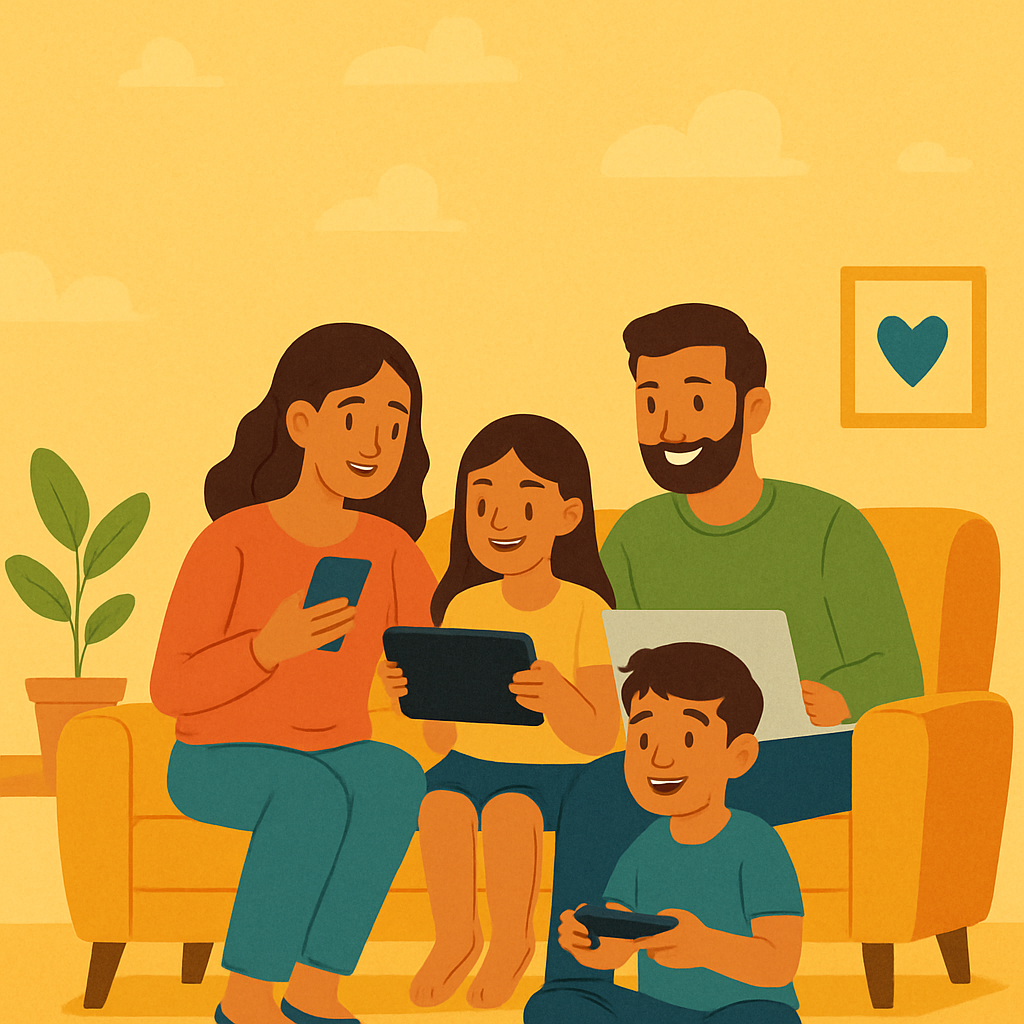You’re not the only person who has ever said, “Just five more minutes on the iPad,” only to come to the realization that thirty minutes had passed. Whether it’s watching a brief cartoon before breakfast, taking an online course in the afternoon, or playing a game before bed, screens are present in every part of our homes these days. The way that technology is a part of our children’s world is different from how it was for us as youngsters.
The question “Should children use screens?” has been replaced. nonetheless “How do we help them establish healthy screen habits?” This is where a family media strategy is useful.
Consider it your family’s guide to technology. Instead of always debating whether phones should be used at the dinner table or how long your child may watch TV, a media plan establishes ground rules that everyone can adhere to. It also actually improves the balance, harmony, and relaxation of family life when done right.
Why Families Face Difficulties Without a Strategy
Without distinct boundaries, screens have a way of infiltrating every aspect of life. Perhaps bedtime is pushed back due to “one more episode.” Perhaps dinner becomes silent—not because everyone’s exhausted, but because everyone’s looking at a phone. Gradually, these small moments compound, leaving parents concerned about sleep, attention spans, and lost moments for genuine-world connection.
- A family media plan doesn’t fix everything overnight, but it does:
- Substitute endless nagging with specific, negotiated rules.
- Help children use technology with purpose rather than instinct.
- Let each other talk, play, eat, and relax.
- Instruct children on the digital health practices they will employ as adults.
Step 1: Document the Screen Habits of Your Family
Before enacting regulations, stand back and consider how your family now utilizes media. Do screens appear the moment kids get home from school? Do children pick up tablets as soon as they wake up? Do devices make their way to the dinner table or creep into bedrooms at night?
This “snapshot” is not blame—it’s awareness. After you see the habits, it is simpler to determine what can remain and what can change.
Step 2: Make It a Family Discussion
This is the magic formula: kids assist in framing a plan most effectively when they are included in the discussion. Rather than laying down the law, sit down with your kids and discuss what’s most important. Ask them:
- “What do you like best about your screen time?”
- “What would you prefer more of—sport, games, drawing, or family time?”
- “What do you think would be useful rules for us to be able to use technology more justly?”
You may be amazed, children can identify the negative effects of excessive screen time for themselves. They feel involved rather than opposed when they help establish the rules.
Step: 3 Set Firm yet Gentle Boundaries in Step Three
Every family will take a different approach, however the following advice is very beneficial:
Areas Without Screens: Devices should not be used in family activities, dinner tables, or bedrooms. These become organic “connection zones.”
Time Limit That Are Family-Friendly: When they finish their homework, younger kids may only have an hour to play. Teenagers may have to juggle social media, studies, and sleep.
The lights on electronics should be cut off at least one hour before sleep in order to ensure enjoyable evenings and restful sleep.
Put Quality Above Quantity: Use creative apps, family movie evenings, or educational activity to replace idle browsing.
In addition to screen hours, set an example of reading, playing outside, and getting involved in hobbies to help you create a healthy balance between your digital and physical lives.
The idea is not punish but equilibrium.
Step 4: Lead By Example
This can be the most difficult step. Kids acquire more from what they do than what we say. When you scroll through email during dinner or watch TV till late at night, kids will perceive that as “normal”. Consider establishing a personal screens curfew or trying to put your phone aside during supper. The idea that we’re all in this together is a powerful statement.
Step 5: Keep Your Creativity and Realism
Things aren’t always clear-cut in life. Holidays, homework, or a new favorite TV show can all cause disruptions. It’s okay. A family media plan is a dynamic document rather than a contract. As your kids grow or your routines change, review it once or twice and make adjustments. A week of dinners without screens or a bedtime routine that truly occurs at nighttime are examples of minor accomplishments to consider.
Step 6: Allow technology to help you, not control you
Paradoxically, technology can aid your strategy. Employ parental controls, app timers, or “Do Not Disturb” features to define limits without reminders. Shared calendars for the whole family can also reserve fun, screen-free pursuits so children anticipate options.
The Bigger Picture
The issue is not screens. They may bring us together, educate us, and even provide us joy. The challenge is to prevent them from taking over the most important moments, like bedtime readings, supper discussions, amusing family pastimes, or a quiet stroll in the park.
A working household media plan is one that is founded on flexibility, justice, and love. It is more about making room for the things that really count, presence, creativity, and connection, than it is about cutting back on screen time.
The ultimate goal of digital wellness is to live a longer life away from screens rather than pass away beside them.


